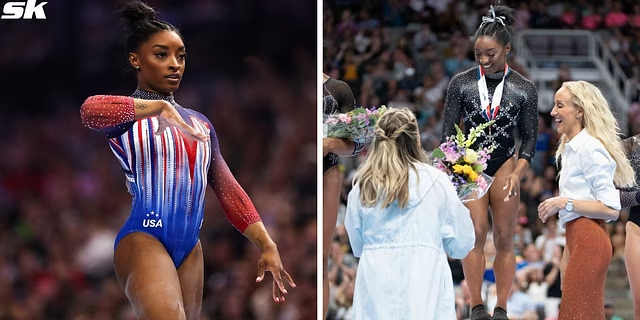
Simone Biles vs. Nastia Liukin: The Evolution of Gymnastic Greatness Through Two Generations
Gymnastics has always been a sport that captivates and inspires, and few athletes have embodied its grace and intensity as vividly as Simone Biles and Nastia Liukin. Both women have left indelible marks on the sport, yet their careers highlight the evolution of gymnastics across two distinct eras. Their journeys offer a fascinating study of how the sport has transformed and how each gymnast has contributed to its rich legacy.
Nastia Liukin: The Graceful Innovator
Nastia Liukin emerged on the world stage in the mid-2000s, captivating audiences with her blend of elegance and technical prowess. Liukin’s career reached a zenith at the 2008 Beijing Olympics, where she won five medals, including gold in the All-Around competition. Her style was a perfect amalgamation of classical ballet and gymnastics, characterized by a fluidity and precision that set her apart.

Liukin’s era was defined by the emphasis on artistry and form. Her routines showcased a sophisticated approach to gymnastics, with an emphasis on choreography and presentation. She brought a new level of grace to the sport, demonstrating that artistry could coexist with athleticism. Her success not only cemented her place in gymnastics history but also paved the way for future generations to explore new dimensions within the sport.
Simone Biles: The Revolutionary Force
Fast forward to the 2010s, and Simone Biles emerged as a game-changer. With her debut at the 2013 World Championships, Biles brought a new era of gymnastics to the forefront. Her approach was markedly different from Liukin’s; it was characterized by unprecedented difficulty, power, and innovation. Biles’ routines are renowned for their high-flying acrobatics and complex combinations, showcasing her extraordinary strength and versatility.
Biles’ impact was most evident at the 2016 Rio Olympics and the 2020 Tokyo Olympics, where she became the most decorated gymnast in history. Her performances were a testament to her physical prowess and fearless ambition, pushing the boundaries of what was thought possible in gymnastics. Her signature moves, like the “Biles” on floor and the “Yurchenko Double Pike” on vault, exemplify a new standard in the sport—one that values daring innovation as much as it does artistry.
The Evolution of Gymnastics
Comparing Biles and Liukin highlights the evolution of gymnastics from a sport that prized elegance and artistic expression to one that also values extreme athleticism and technical difficulty. Liukin’s routines were a celebration of form and grace, showcasing the beauty of gymnastics as an art. In contrast, Biles has redefined the sport with her unparalleled physical feats, making it a showcase of strength and innovation.
The shift in focus from artistry to athleticism reflects broader trends in sports, where records are continually shattered and new standards are set. Biles’ dominance has not only set new benchmarks but also challenged future gymnasts to push beyond existing limits. Meanwhile, Liukin’s influence remains a testament to the sport’s aesthetic side, reminding us of the artistry that makes gymnastics both a sport and a performance.
Legacy and Impact
Both Simone Biles and Nastia Liukin have left profound legacies in gymnastics. Liukin’s era taught us the value of grace and precision, while Biles’ achievements underscore the relentless pursuit of excellence and innovation. Each gymnast’s contributions reflect the dynamic nature of the sport and the ongoing evolution of athletic performance.
As we look to the future of gymnastics, the contrast between Biles and Liukin serves as a reminder of the sport’s rich history and its continuous transformation. Their careers not only highlight the incredible achievements of individual athletes but also illustrate the broader trends shaping gymnastics today. Through their unique approaches, both have carved their names into the annals of gymnastics history, offering inspiration to generations to come.
Leave a Reply